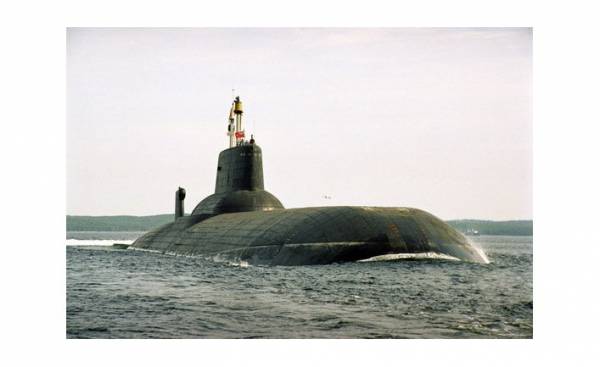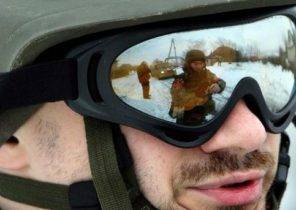
In the summer Russia plans to send along the Norwegian coast, the largest nuclear submarine in the world.
“You submarines are not anything special, but would be curious if the “Dmitry Donskoy” will indeed appear. This is a very remarkable ship,” — said Ivars Myeon (Ivar Moen), Lieutenant-Colonel and spokesman of the Main operational headquarters of the Armed forces.
According to the newspaper “The Independent”, Barents Observer, the submarine, the length of which is 172 meters, must participate in the parade of Russian Navy near St. Petersburg in July. To get to Saint Petersburg on 30 July, she will leave the White sea, will be held along the Norwegian coast, then across the Skagerrak, and then fall into the Baltic sea.
“Dmitry Donskoy”, the only submarine of the Typhoon (Russian classification “Shark” — approx. ed.) that is still in use. It was originally built in order to provide the possibility of the Soviet Union to retaliate in case the country is under nuclear attack. The submarine is equipped with 20 missiles and about 200 nuclear warheads.
“Russian military ships constantly cruising along the Norwegian coast. And that our territorial waters approaching the submarine, there is nothing new,” says Myeon.
Some experience anxiety
“I have a concern that the nuclear submarine, which is 40 years and which has on Board two relatively large reactor, so long will sail along the Norwegian coast, and then will enter the Baltic sea. The Norwegian authorities should take care to know the exact date of sailing in order to be able to prepare. It is also necessary to ensure that the Board has no nuclear weapons,” — said the representative of the “Bellona” nuclear physicist Nils Boehmer (Nils Bøhmer) in an interview with The Independent Barents Observer.
“Our task is to monitor what is happening in Norwegian coastal waters. Still not solved, whether will go “Dmitry Donskoy” in swimming. We define its position in relation to this matter, when it will be important,” says Myeon.
Norway is well prepared for possible disasters. The Crisis Committee for nuclear safety include, in particular, representatives of the State Committee on nuclear security, the Armed forces, the Department of health and Department of public safety.
“It’s part of our daily work — be ready to solve problems that can arise if the submarine will crash,” says Leland Astrid (Astrid Liland) from the State Committee on nuclear safety.
“We conducted the study in case of a possible emissions to water and atmosphere. If there is a release into the atmosphere, it may have implications for food production on land, if a misfortune happens directly on the coast have to evacuate local residents,” says Leland.
The Russian Navy is now only awaiting the approval of President Vladimir Putin, who is expected to give a signal in a month.
Source: NTB and NRK







